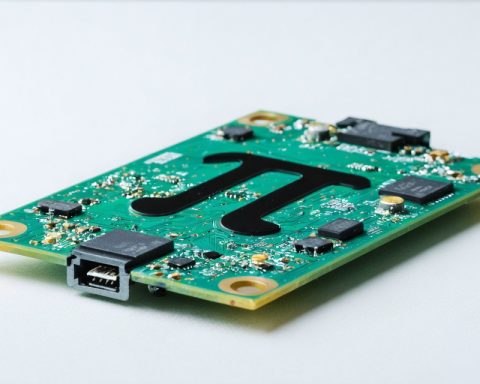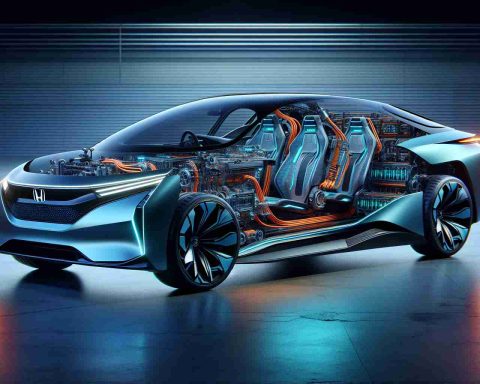- BYD has unveiled “God’s Eye,” a revolutionary autonomous driving technology aimed at making driverless systems as ubiquitous as seatbelts and airbags.
- Offering this advanced system at no additional cost, BYD challenges Western competitors by integrating it even in low-cost EVs like the Seagull, priced under $10,000.
- The technology is based on “Xuanji Architecture,” which combines electrification and intelligence for real-time data processing and adaptation.
- Featuring advanced LIDAR and radar, the system blurs lines between current driver assistance and full autonomy, reaching levels 2 and 3 automation.
- Despite past critiques, the new technology enhances BYD’s reputation and sets a benchmark, pushing toward universal vehicle autonomy.
In a striking turn of events, BYD, China’s leading electric vehicle maker, has rocked the automotive world by launching “God’s Eye,” its new autonomous driving technology. This ambitious leap aims to democratize driverless tech, making it as integral to cars as seatbelts and airbags. With a flair reminiscent of a tech disruptor, BYD has chosen not to charge extra for this groundbreaking system, a bold maneuver that undercuts Western rivals.
At the heart of this innovation is the vision to make autonomous driving accessible to everyone. Even BYD’s most affordable EV, the Seagull, priced under $10,000, showcases this advanced driver-assistance system (ADAS), capable of navigating highways for 600 miles unaided. The message is clear: autonomy isn’t a luxury; it’s a necessity.
BYD’s new system thrives on the “Xuanji Architecture,” a sophisticated blend of electrification and intelligence. This vehicular “brain” processes data with astonishing speed, granting cars the cognitive horsepower to adjust to both internal and external changes in real time. The new system’s design merges multiple layers of sensory input, featuring advanced LIDAR and radar systems, effectively blurring the line between existing driver assistance and full autonomy.
While European entities like Euro NCAP have previously criticized BYD’s systems, the new architecture promises enhancements that aim to rewrite the narrative. Each model in the lineup, categorized into Tiers A, B, and C, offers varying degrees of autonomy, pushing the boundaries of level 2 automation and reaching into level 3 territory.
As the West grapples with regulatory and competitive challenges, BYD, harnessing the might of its integrated vehicle intelligence, charts an audacious path forward. Not in the race alone, but leading with a vision — autonomy for all.
Unlocking the Future: How BYD’s “God’s Eye” Tech is Transforming Autonomous Driving
Features, Specs & Pricing
BYD’s “God’s Eye” technology is built on the proprietary “Xuanji Architecture,” which allows seamless integration of electric vehicle components with sophisticated artificial intelligence. This architecture integrates multiple sensors, including advanced LIDAR and radar systems that facilitate real-time data processing for a comprehensive view of the surrounding environment.
The affordability factor is notable, with even the budget-friendly BYD Seagull priced under $10,000, incorporating this high-tech system as a standard feature. This strategic no-extra-cost approach challenges competitors and makes autonomous driving accessible to a larger segment of consumers.
Real-World Use Cases
BYD’s technology application ranges from city traffic navigation to long-distance highway driving. In densely populated urban areas, the system can assist with complex maneuvers, including parking and lane changes, whereas on highways, it can operate independently for up to 600 miles. These features make it ideal for daily commuting and long road trips, demonstrating versatility not yet widely available in similarly priced vehicles.
Market Forecasts & Industry Trends
The global autonomous vehicle market is expected to grow significantly in the coming years. According to a report by Allied Market Research, the industry is projected to reach $556.67 billion by 2026. The push by companies like BYD to integrate advanced technologies into even their most affordable models will likely continue this trend, compelling other manufacturers to reduce costs and enhance technological offerings to remain competitive.
Security & Sustainability
Safety remains a priority as BYD enhances its autonomous systems. By adopting an architecture that includes multiple redundant systems, “God’s Eye” can potentially handle system failures without compromising passenger safety. Furthermore, with BYD vehicles being fully electric, the sustainability factor is addressed, aligning with global efforts to reduce emissions and carbon footprints.
Controversies & Limitations
While BYD’s advancements are noteworthy, the technology still faces criticisms, particularly from Western safety bodies like Euro NCAP. Concerns revolve around the system’s reliability and the varying regulations across different global markets that could slow its adoption. Level 3 automation, which allows drivers to take their eyes off the road occasionally, also poses legal and insurance challenges.
Tutorials & Compatibility
To assist drivers in understanding and using these advanced features, BYD is expected to provide user-friendly guides and tutorials. These resources will be crucial for maximizing the potential of “God’s Eye” while ensuring user confidence and safety. Compatibility with existing EV charging infrastructures is expected to be high, leveraging BYD’s experience in the electric vehicle sector.
Insights & Predictions
With the launch of “God’s Eye,” BYD is setting a precedent for the future of autonomous vehicles. Analysts predict that this will accelerate global adoption of autonomous technologies, pushing regulatory bodies to update laws and paving the way for advances in vehicle intelligence.
Actionable Recommendations
1. Stay Informed: Keep updated on regulatory changes regarding autonomous vehicles in your region to make informed decisions about adoption.
2. Leverage Tutorials: Utilize the resources provided by BYD to fully understand the capabilities and limitations of the “God’s Eye” system.
3. Consider the Total Cost: Evaluate the comprehensive cost benefits of adopting a vehicle integrated with autonomous technology, considering savings on insurance and potential energy costs.
For more insights into the latest automotive technologies, visit BYD Global.
















